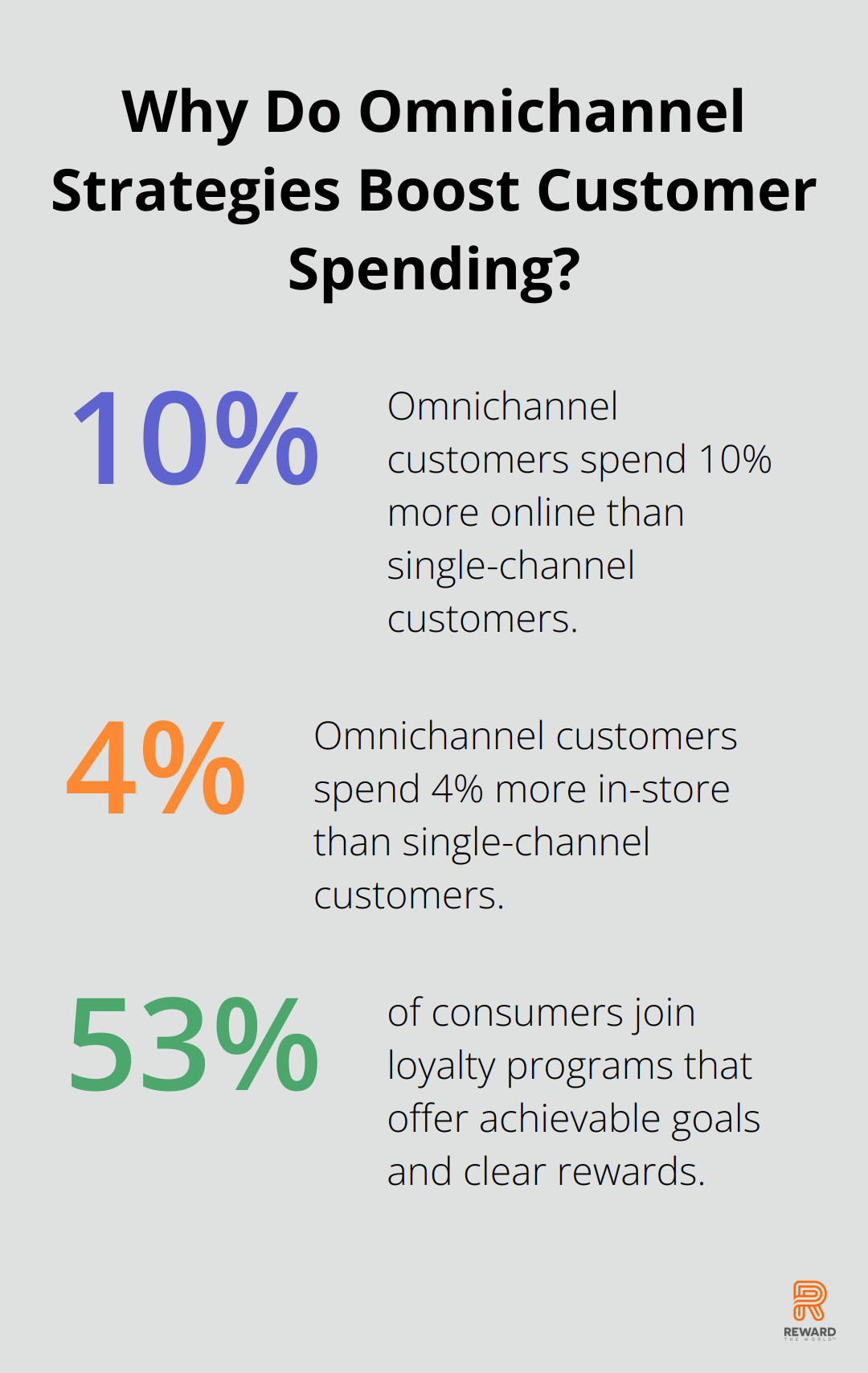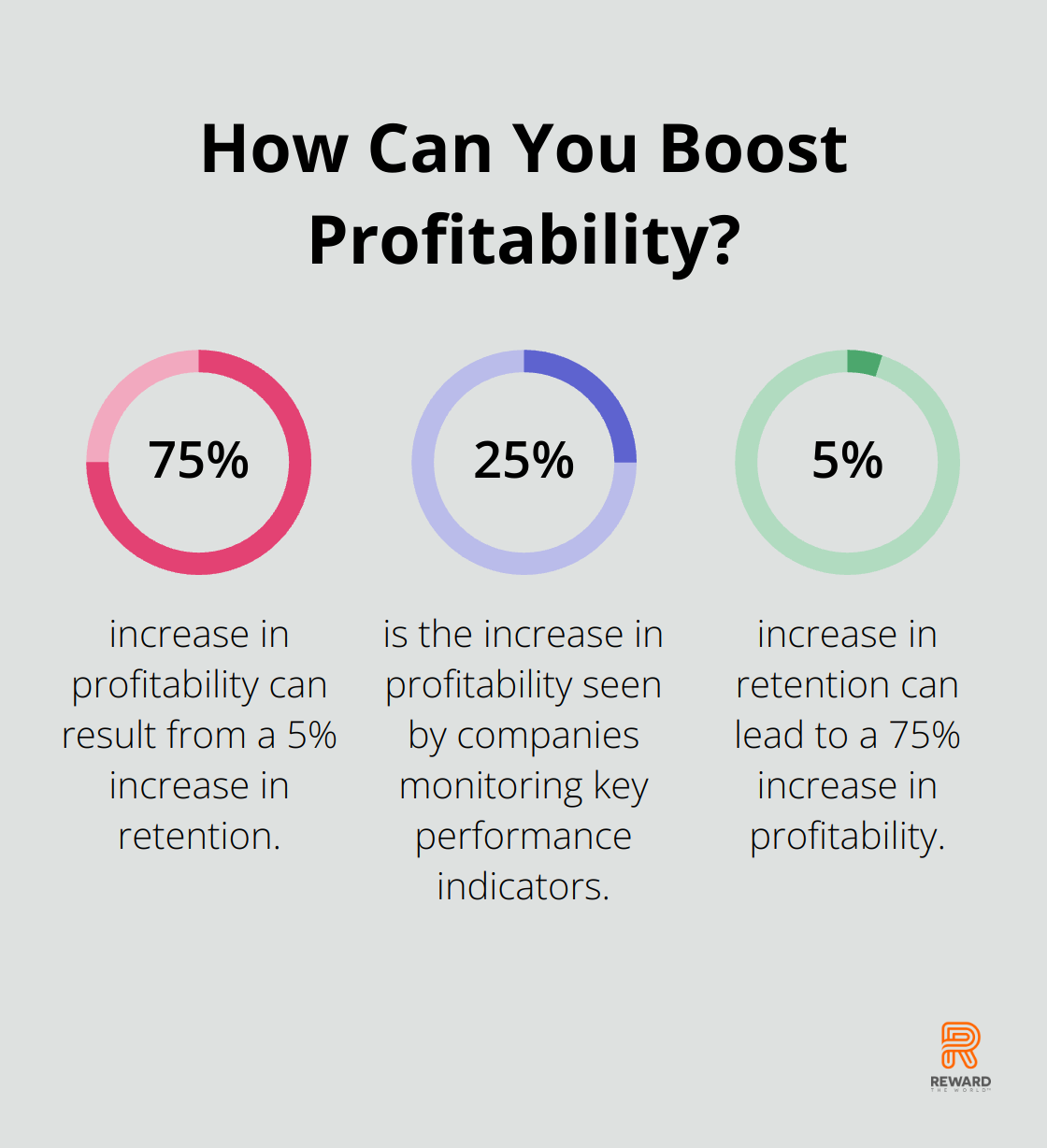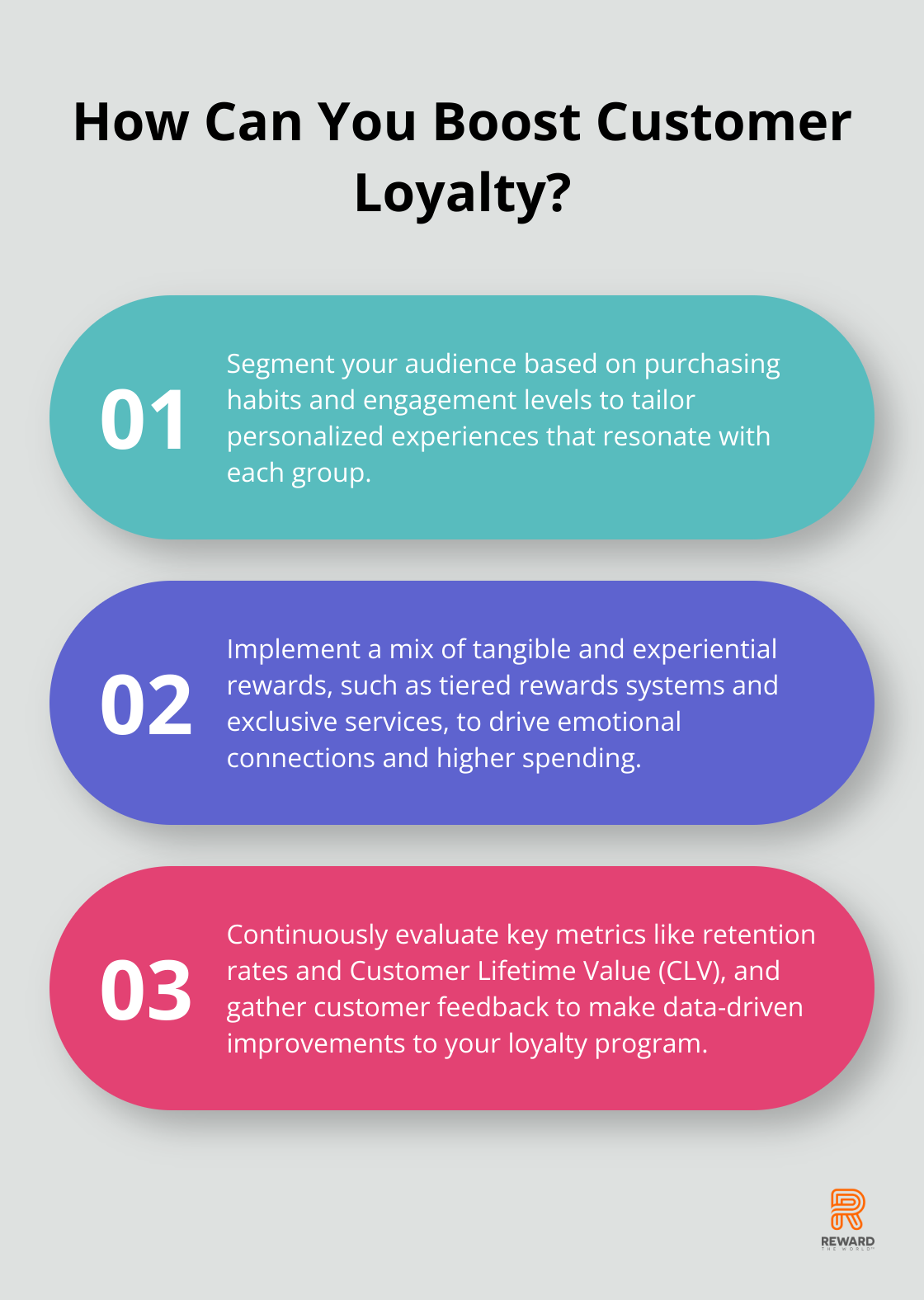
Launching a loyalty program that makes a real difference requires a deep understanding of your customers and strategic planning.
By aligning rewards with customer preferences and behaviors, you can create a program that not only attracts but retains loyal consumers.
Here at Reward the World, we will guide you through key steps to design, measure, and optimize a high-impact loyalty program tailored to your audience.
What Do Customers Want?
A high-impact loyalty program begins with a thorough understanding of your customers. The foundation of a successful loyalty program lies not just in offering rewards, but how well those rewards resonate with the people you aim to attract and retain.
Identifying Key Customer Segments
Identifying who your key customers are is an essential first step. Segmentation should be based on real data points, such as purchasing habits, demographics, and engagement levels. Nielsen reports that highly-engaged customers are twice as likely to participate in loyalty programs. Segmenting your audience allows you to create personalized experiences that speak directly to each group. For example, millennials might prefer digital rewards while baby boomers might appreciate exclusive in-store experiences.
Analyzing Customer Preferences and Behavior
Understanding customer preferences can drive the direction of your loyalty program. Analyze historical data to see what products are often bought together or what services are frequently used. Tools like Google Analytics and CRM systems can provide insights into these patterns. According to a survey by Accenture, 91% of consumers are more likely to engage with brands that offer personalized recommendations. This means knowing not just what your customers buy, but why they buy it can help you tailor rewards that motivate ongoing engagement.
Leveraging Data for Personalization
Data is the cornerstone of personalization. It’s been shown that personalized rewards programs can enhance customer satisfaction by up to 20%. Use the data collected from your CRM and point-of-sale systems to inform which rewards will be most appealing. For instance, offering a reward based on the customer’s last purchase can increase the likelihood of redemption. In fact, loyalty programs like the one implemented by Starbucks saw a significant uptick in customer engagement once they started offering personalized rewards based on individual purchase history.

For more on how to design personalized rewards, check out personalized rewards strategies.
Only when you understand your customers’ needs can you start to design a loyalty program that truly delivers high impact and long-term loyalty.
How to Design the Right Loyalty Program
Crafting a loyalty program that stands out involves a meticulous design process. The choices you make during this phase can significantly impact program efficacy and customer engagement.
Choosing the Right Rewards Structure
The rewards structure is the backbone of your loyalty program. Businesses need to offer a blend of tangible and experiential rewards to cater to diverse customer preferences. For instance, a tiered rewards system can be particularly effective. According to a study by Bond Brand Loyalty, 50% of consumers say they increase spending or change purchasing behavior to reach a higher tier in a loyalty program.

Tangible rewards like discounts and freebies can motivate purchases, but don’t overlook experiential rewards. Exclusive events, early access to sales, and personalized services can drive emotional connections. Programs like Sephora’s Beauty Insider offer a mix of both, which is why they reported a significant membership increase year over year.
Setting Achievable and Engaging Goals
Goals are the driving force behind customer participation. Aim to set goals that are both achievable and enticing. Overly ambitious targets can discourage participation. On the other hand, if goals are too easy, the program might fail to motivate additional spending.
Align rewards with milestones that make sense for customer behavior. For example, offering a reward after every five purchases can drive repeated visits. A report by Colloquy suggests that 53% of consumers join loyalty programs that offer achievable goals and clear rewards. Therefore, clarity and attainability are crucial.
Incorporating Omnichannel Experiences
An omnichannel approach is essential in today’s market. Modern consumers interact with brands through multiple touchpoints, and your loyalty program should reflect this. A Harvard Business Review study found that omnichannel customers spend 10% more online and 4% more in-store than single-channel customers.
Ensure that customers can earn and redeem rewards seamlessly, whether they’re shopping online, on mobile apps, or in brick-and-mortar stores. Programs that integrate omnichannel experiences, like Nordstrom’s loyalty program, have proved successful, reporting higher engagement rates and customer satisfaction.
For more insights on optimizing omnichannel tactics, refer to omnichannel tactics.
Adopting these strategies will help design a loyalty program that not only retains current customers but also attracts new ones through compelling and personalized experiences.
Measuring Success
To know if your loyalty program is hitting the mark, measuring and optimizing its performance is vital. Mere implementation isn’t enough; continuous evaluation ensures the program evolves with customer needs and market trends.
Key Metrics to Track
Effective measurement starts with choosing the right metrics. Retention rates, Net Promoter Score (NPS), and Customer Lifetime Value (CLV) are essential indicators. Companies that monitor these KPIs have seen up to a 25% increase in profitability, according to Bain & Company. High retention rates often correlate with successful loyalty programs. For instance, a 5% increase in retention can lead to a 75% increase in profitability.

Conversion rates for rewards redemption and the frequency of customer interactions with the program are equally important. High engagement means the loyalty program is working. Programs like Target’s REDcard reported increased shopping frequency and basket size among loyal members.
Collecting and Analyzing Feedback
Customer feedback provides actionable insights. Tools like surveys and NPS can gauge customer satisfaction and pinpoint improvement areas. For example, an Accenture survey found that 60% of consumers want easier ways to earn points. Addressing such feedback can significantly enhance the user experience.
Sentiment analysis through social media listening tools and direct feedback mechanisms help capture unfiltered customer opinions. Programs that incorporate real-time feedback loops, like those at Starbucks, often adapt faster, leading to increased customer loyalty.
Implementing Continuous Improvements
Continuous improvement is not an option; it’s a necessity. Regularly update your program based on performance data and customer feedback. Subscription-based services like Amazon Prime continuously tweak their loyalty benefits, keeping the program relevant and appealing.
A/B testing is another crucial strategy. Testing different rewards, communication methods, or engagement tactics can help identify what works best. This iterative approach, as seen in programs from brands like Sephora, can lead to higher engagement and satisfaction rates.
For more on utilizing A/B testing, see our guide on using A/B testing.
By focusing on these metrics and feedback-driven improvements, your loyalty program can achieve higher impact, fostering long-lasting customer relationships.
Conclusion
Launching a high-impact loyalty program involves understanding your customers, designing a strategic rewards structure, and continuously measuring success. By aligning rewards with customer preferences and behaviors, businesses can create loyalty programs that not only attract but also retain loyal consumers.

Adapting to customer needs is essential. Personalization based on collected data enhances customer satisfaction and engagement. Successful examples, such as the personalized rewards at Starbucks and omnichannel experiences at Nordstrom, show that a tailored approach can lead to significant engagement and satisfaction.
Long-term loyalty and retention depend on ongoing evaluation and improvements. Collecting customer feedback, monitoring key performance indicators, and implementing continuous enhancements keep the loyalty program relevant and effective. Brands like Sephora and Amazon continuously modify their programs, yielding higher engagement rates.
At Reward the World, we offer a dynamic platform to help businesses foster customer loyalty, increase sales conversions, and enhance employee recognition. Our global incentives platform is available in 15 languages and supports 250 million users. With over 60 million rewards across various categories, instant reward delivery, and robust analytics, Reward the World is well-equipped to elevate your customer engagement and company performance. Discover more about our platform here.
By following best practices and utilizing tools like Reward the World, businesses can launch loyalty programs that drive long-term customer loyalty and retention.
